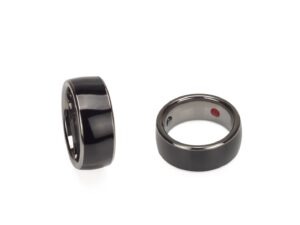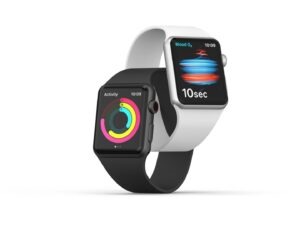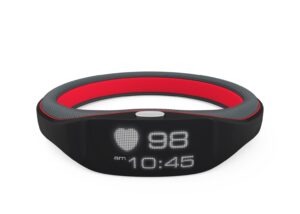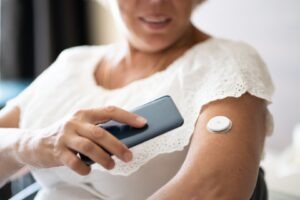In the twilight of our lives, we all dream of days filled with vitality, joy, and excellent health. That’s where wearable health tech comes in. It’s another telemedicine digital health tool.
But what is wearable health tech? Simply put, it is an umbrella term for a multitude of devices and technologies that we can wear on our bodies, designed to monitor, track, and enhance various aspects of our health and well-being.
Examples of Wearable Technology
Wearable health tech encompasses a wide variety of gadgets. Similar to the health benefits of AR and VR technology, these are devices designed to improve your well-being. However, these devices are designed to be worn on a daily basis so that they can continuously track and monitor your health.
Here are the top five wearable technologies most popularly used by seniors.
Smart Rings

Meet the newest member of the health wearables family, the smart ring. It’s not just a pretty piece of jewelry, it’s your personal health watchdog. They include a biosensor that monitors your heart rate, tracks your sleep, and even checks your body temperature.
Simply wear it on your finger and sync it with your smartphone.
Smartwatches

One of the pioneers in the health monitoring game. From tracking your steps and heart rate to alerting you about abnormal heart rhythms, smartwatches have got it covered. Some even have an accelerometer and a gyroscope built in which can detect falls and automatically send for help.
Just strap it on, sync with your phone, and it’ll look after your health around the clock.
Smart Wristbands & Bracelets

Similar to smartwatches, smart wristbands can count your steps, track your sleep, and keep a watchful eye on your heart rate. You can also get specialized wrist wearables to treat chronic issues such as hand tremors, regulating body temperature, or managing menopause.
Just pop it on, pair it with your smartphone, and you’re all set for a healthier, more active lifestyle.
Continuous Glucose Monitors

Continuous glucose monitors make managing diabetes easier. These handy devices constantly track your blood sugar levels, helping you stay on top of your glucose levels – no pricking necessary.
Just attach the sensor to your skin, and it sends readings to your smartphone or reader.
Blood Pressure Monitors

Helpful in managing hypertension. The blood pressure monitor cuff is used to keep an eye on your blood pressure levels. No need to visit the doctor, you can get your readings from the comfort of your home.
Just wrap the band around your arm, and view the results right on your phone or reader.
Wearable Health Tech Benefits to Senior Health
The benefits of wearable health tech for seniors are manifold. By providing real-time data about various health parameters, these devices empower seniors to take charge of their health. Promoting healthier lifestyles, encouraging regular exercise, and aiding with diet control.
They can also provide early warnings about potential health issues, enabling prompt medical intervention.
By becoming an integral part of senior healthcare, wearable health tech is profoundly influencing the way we age, making the process healthier and safer for all.
Disadvantages of Wearable Technology
For seniors, mastering new technology can be challenging.
Smaller devices may have tiny screens and buttons, making them difficult to operate. There are also privacy concerns, as these devices need to be connected to the internet. Read the privacy policy of the device to find out how the manufacturer prevents exposing your sensitive health data to potential cyber threats.
Choosing the Right Wearable Health Tech
When choosing wearable health tech, seniors need to consider their specific health needs, technological aptitude, and daily comfort.
Fitbit is popular for its user-friendly interface and wide range of health-tracking features. Meanwhile, the Apple Watch is renowned for its advanced health monitoring and fall detection features.
Making the Most of Wearable Health Tech in Your Senior Years
To reap the maximum benefits of wearable health tech, seniors should use these devices consistently, understand the data they provide, and incorporate the insights into their daily lives. However, seniors shouldn’t use these devices in lieu of regular medical check-ups. For others, there’s a potential stress factor caused by over-worry from the constant health monitoring.
What Is the Future of Wearable Technology in Healthcare?
Looking ahead, the future of wearable technology in healthcare seems bright and exciting. With advancements in technology, these devices are becoming more sophisticated, offering a wider range of health monitoring features.



